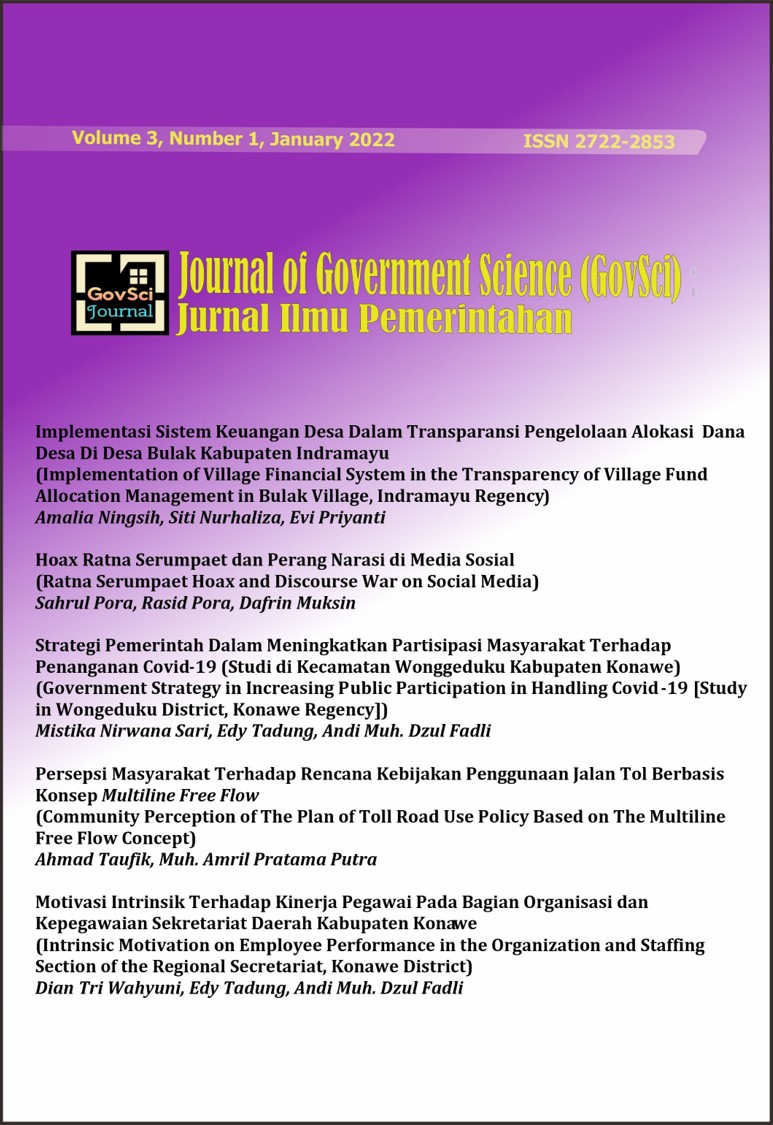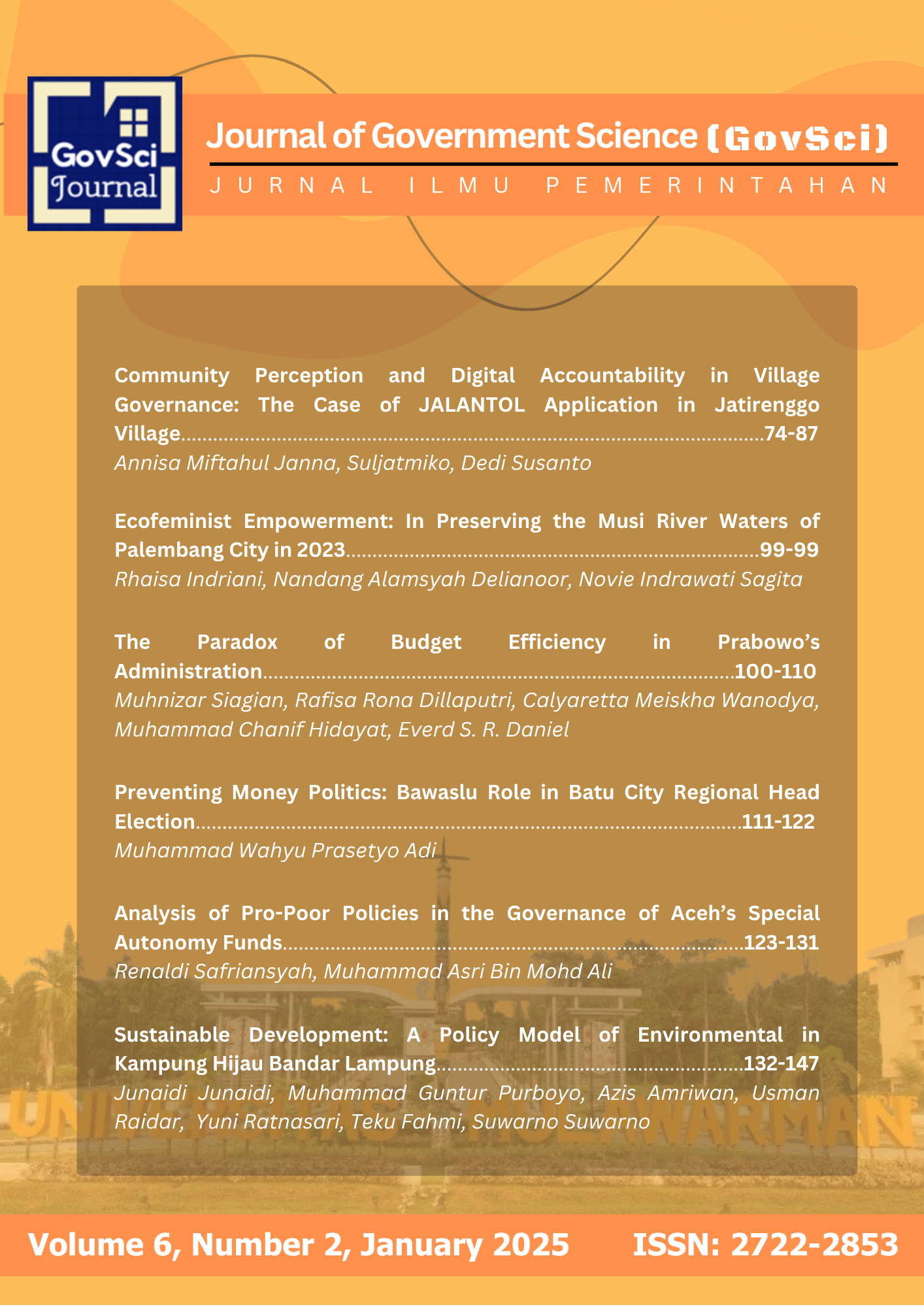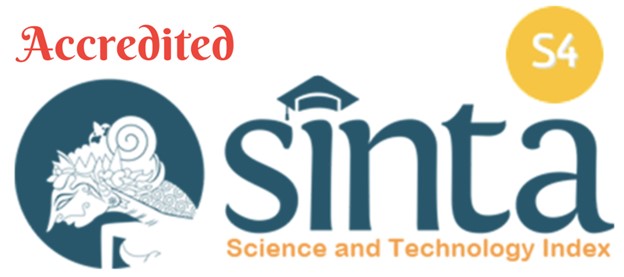Persepsi masyarakat terhadap rencana kebijakan penggunaan jalan tol berbasis konsep Multiline Free Flow
Community perception of the plan of toll road use policy based on the multiline Free Flow concept
DOI:
https://doi.org/10.54144/govsci.v3i1.29Keywords:
Policy, Public Perception, Multiline Free FlowAbstract
The population has a close relationship with the development of transportation and the number of road use indicated by the level of congestion due to the density of vehicles. The government's efforts through the construction of toll roads are one of the innovations in the form of service policies to the community. This includes service plans through Multi Line Free Flow (MLFF), which is a non-stop payment method, because the RDH Sensor is attached to the vehicle. The purpose of this research is to explain the public's perception of the Multi Line Free Flow (MLFF) policy, by first describing the general character of toying road users who will support or slow down the implementation of this policy. The research method is a survey method (Moleong, 2007) with a qualitative approach (Sugiono, 2009). The informants who were interviewed were 50 people, through the distribution of online questionnaires. The results of the study found that there are still 30 percent of toll road users who are not ready for cards and sufficient balances when entering toll roads and 64 percent only buy and refill cards when entering toll gates. Regarding the MLFF payment method, it shows that 74.5 percent of toll road users do not know the MLFF policy. The largest source of information about MLFF was obtained from the media, 46.6 percent and 38.4 percent only found out from filling out a questionnaire. The conclusion of the MLFF method according to the respondents is very useful (80%) and easy (94%). The obstacles that will be faced are the indiscipline of toll road users (78%) and network disturbances on the RHD sensor (22%). Toll road users hope that the MLFF policy still needs to be socialized intensively (66%), support for road facilities (6%) and a fast and good network (28%).
References
Aminah, S. (2018). Transportasi Publik dan Aksesbilitas Masyarakat Perkotaan. Jurnal Teknik Sipil, 9(1), 1142–1155.
Anggara, S. (2012). Ilmu Administrasi Negara: Kajian Konsep, Teori, dan Fakta Dalam Upaya Menciptakan Good Governance (Vol. 1). CV Pustaka Setia.
Astutik, E. P., & Gunartin, G. (2019). Analisis Kota Jakarta Sebagai Smart City Dan Penggunaan Teknologi Informasi Dan Komunikasi Menuju Masyarakat Madani. Inovasi, 6(2), 41. https://doi.org/10.32493/inovasi.v6i2.y2019.p41-58
Budiharjo, A., & Margarani, S. R. (2019). Kajian Penerapan Multi Lane Fee Flow (MLFF) Di Jalan Tol Indonesia. Jurnal Keselamatan Transportasi Jalan (Indonesian Journal of Road Safety), 6(2), 1–14. https://doi.org/10.46447/ktj.v6i2.27
Hartaman, N., Wahyuni, W., Nasrullah, N., Has, Y., Hukmi, R. A., Hidayat, W., & Ikhsan, A. A. I. (2021). Strategi Pemerintah Dalam Pengembangan Wisata Budaya Dan Kearifan Lokal Di Kabupaten Majene. Ganaya : Jurnal Ilmu Sosial Dan Humaniora, 4(2 SE-Articles). https://doi.org/10.37329/ganaya.v4i2.1334
Kadarisman, M., Gunawan, A., & Ismiyati, I. (2015). Implementasi kebijakan sistem transportasi darat dan dampaknya terhadap kesejahteraan sosial di jakarta. Jurnal Manajemen Transportasi & Logistik, 2(1), 59–78.
Moleong, L. J. (2010). Metodologi penelitian kualitatif. Remaja Rosdakarya.
Nurmandi, A. (2014). Manajemen perkotaan: teori organisasi, perencanaan, perumahan, pelayanan, dan transportasi mewujudkan kota cerdas. JKSG.
Prabowo, A., & Arofah, K. (2017). Media Sosial Instagram Sebagai Sarana Sosialisasi Kebijakan Penyiaran Digital. Jurnal Aspikom, 3(2), 256–269.
Sugiyono, P. D. (2017). Metode Penelitian Pendidikan: Pendekatan Kuantitatif, Kualitatif, R&D. Bandung: CV Alfabeta









